From root beer to Dr. Pepper to wild cherry cola, many soft drinks still carry an imprint of herbal history in their names – though it’s been decades since the plants have had any significant presence in the formulas. I first explored this concept with ginger ale, including two recipes to make your own. Root beer is another soda that has a rich herbal origin. If you’ve ever wondered how to make root beer or where the tradition comes from, read on.
The Roots of Root Beer
In America’s Colonial era, brewing teas and fermenting them into low-alcohol beers was a reliable way to make sure your family’s source of hydration wouldn’t make them sick. (In terms of alcohol content, these were more along the lines of today’s kombucha than what we think of as beer.) Adding herbs to the boil boosted both the flavor and nutritional value of the finished drink.
Settler families of the time would have used any nutrient-rich plants available to them – the knowledge of which was influenced by practices of indigenous cultures of the Northeast – passing the recipe down and tweaking it over the generations.
Then, in the late 1800s, an entrepreneurial pharmacist named Charles Elmer Hires struck on an opportunity to bring root beer from the storage cellar to grocery store shelves. As the legend goes, Hires tasted a delicious heirloom brew on his honeymoon at a New Jersey inn, and asked the innkeeper’s wife how to make root beer like hers. She shared the details, right down to a forest tour identifying the plants she used.
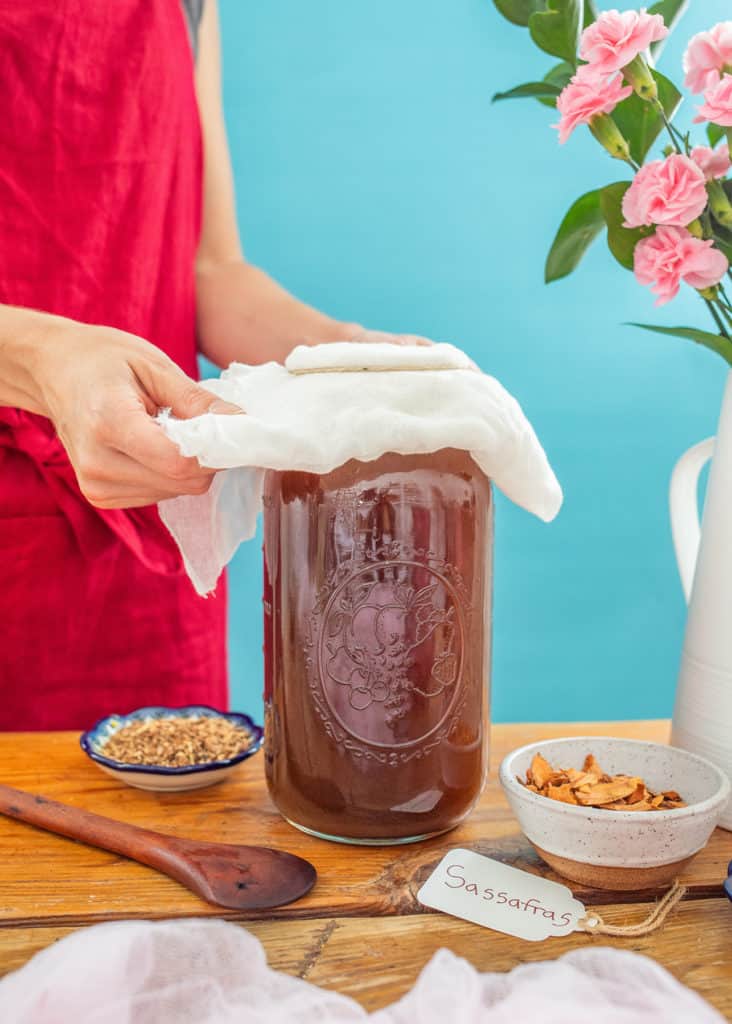
Upon Hires’ return to Philadelphia, he tweaked the recipe a bit, developing a powdered herb mix that could be rehydrated and fermented at home.
His formula was complex and included sarsaparilla root, ginger root, licorice root, and spikenard root – hence the name “root beer” – as well as sassafras bark, juniper berries, pipsissewa leaf, wintergreen leaves, vanilla beans and birch bark.
Hires harvested his roots in cold weather for potency and flavor, touting the drink as “soothing to the nerves, vitalizing to the blood, refreshing to the brain.”
A teetotaler, Hires originally wanted to call his product “powder root tea,” but a mentor suggested that “root beer” might go over better with the miners Hires was hoping would buy the mix. Indeed, root beer became a great success, making Hires a millionaire and inspiring an industry that, over time, evolved into the root beers on supermarket shelves today.
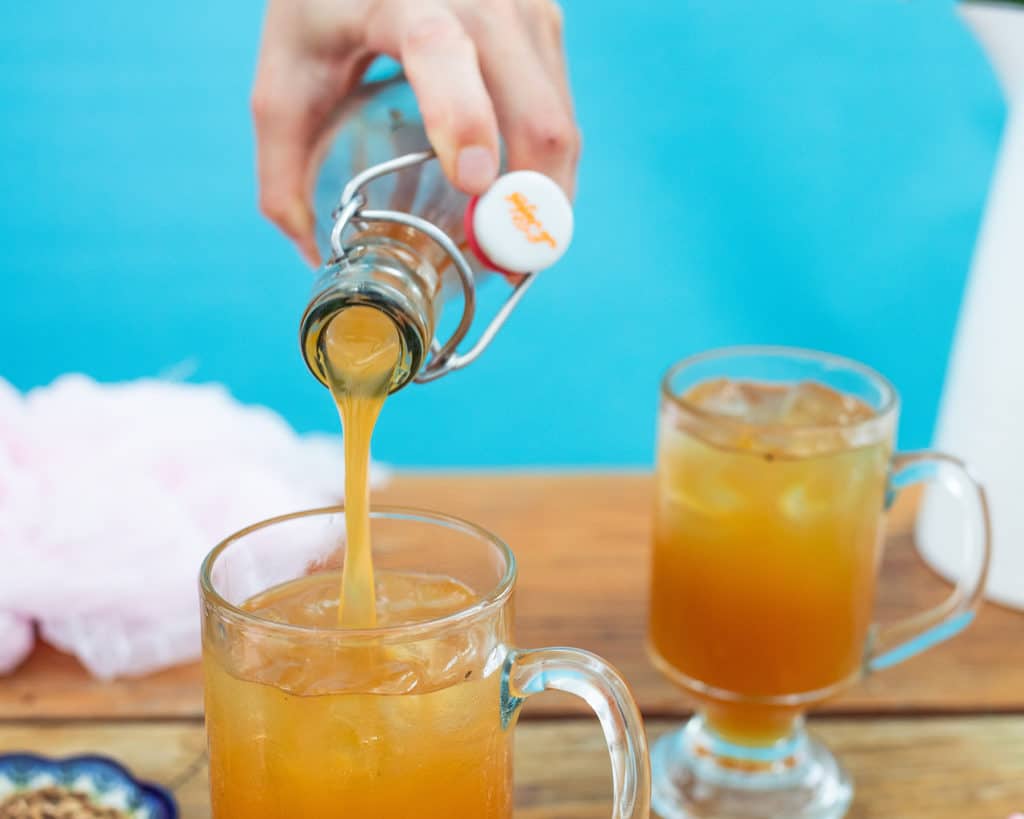
What’s in Store-Bought Root Beer?
Modern root beers are primarily carbonated water and high fructose corn syrup, with small amounts of artificial coloring, preservatives, natural and artificial flavors, and foaming agents. Yuck.
Refined sugar in any form, including high fructose corn syrup, has been shown to contribute to problems from obesity to tooth decay. A 20-ounce bottle of soda has 16 teaspoons of sugar. Root beer, which parents often prefer to give kids because it’s not caffeinated, can contain even more sugar. One of the most well-known brands has 10 ⅓ teaspoons in a can, far exceeding the recommended limit of 6 teaspoons per day for women and kids, (really??) and even surpassing the 9 teaspoons considered healthy for men.
We’ve all seen photos of sugar and soda, but they are a good reminder:
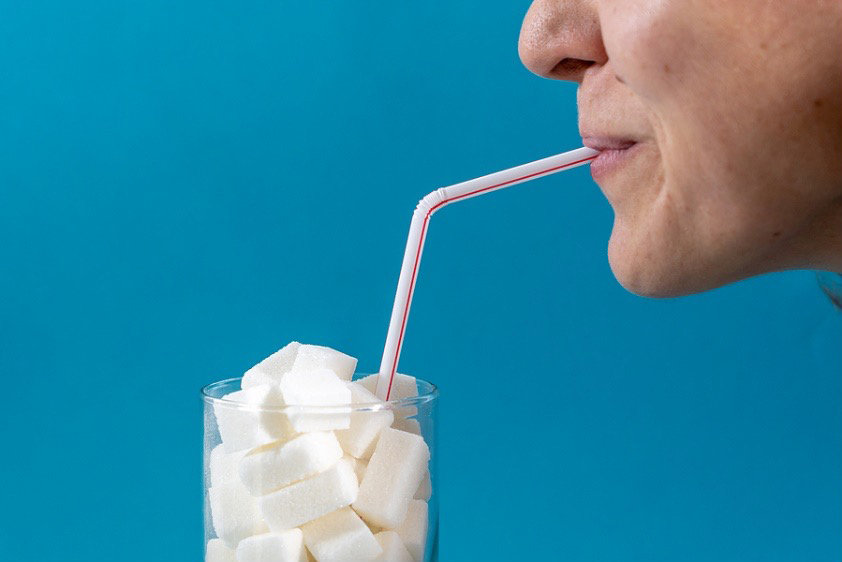
As for “natural and artificial flavors,” what’s actually in there is anyone’s guess. Under the guise of proprietary knowledge, these nonspecific descriptions allow companies to use a mix of chemicals to flavor sodas without any transparency. Many artificial flavors are known carcinogens and companies are not required to tell you.
Our food and drink can either be slow poison or slow medicine. Anything we put in our body can either contribute to toxin overload or help prevent and repair damage from everyday unavoidable toxin exposures. If you start seeing your food as medicine, cutting store-bought soda from your diet is a clear step with a big payoff – not just for you but your whole family.
“If you start seeing your food as medicine, cutting store-bought soda from your diet is a clear step with a big payoff – not just for you but your whole family.”
Of course, we all occasionally crave something sweet and bubbly, and by learning how to make root beer, you can connect with this historic drink while practicing your fermentation skills and having full control over the ingredients.
I want to note that there are some mass-market root beers being made with live probiotic cultures and natural ingredients. This is a huge step forward and it’s wonderful to have those options on the shelf. Of course, we pay for quality, so if you can plan ahead and make your own, you’ll save money – and probably have fun doing it.

Why Do We Set Our Kids up Like This?
Since my son started college, he has consumed more sugar junk soda in a year than he has in the past 15 years. You may be an adult that has already worked through the process of getting off of sugar drinks, but why are they the main offer at every turn? Adolescents and young adults are the heaviest consumers of sugary drinks. I see articles that tell people to just resist the junk and take responsibility for what they consume. That is fine, but what about just having better options available and who gets to put all the poison in drinks anyway?
I have been around a lot of college kids lately and soda is everywhere. It is what’s available in the school cafeteria, what they grab at the store or gas station and at all their parties. They can’t afford expensive drinks. The sodas are convenient and addicting and their brains are still developing, so consequences aren’t the first thing on their minds.
They are out of the house for the first time and their new-found freedom includes eating and drinking whatever they want. They are busy and broke and so junk drinks are cheap and easy. They now get to go through years of drinking crap, degrading their health and then one day they wake and start finding their way back to health, but WHY? Why is this what is all around the kids and teenagers, the more vulnerable populations?
Sure, parents can control things for the kids. Sure, teenagers can make a different choice. Sure, there are more options now like kombucha, etc. But this is still a massive public health problem.

Benefits of Homemade Root Beer
Anyway, let’s get back to the inspirational solution that we are all here for. Unlike most store-bought root beers, homemade root beer is really a health-giving treat.
Fermentation
Many benefits of making root beer at home come from the fermentation process. Fermentation improves bioavailability of minerals and creates new nutrients, including several B vitamins and probiotic bacteria. These beneficial bacteria contribute to a healthy gut microbiome, boosting nutrient assimilation and decreasing the likelihood of pathogenic bacteria finding a foothold in the gut.
Sarsaparilla Root
The root has a cleansing and toning effect on the genito-urinary system, liver, and gallbladder. For this reason, Western herbalists turn to this herb to help the body clear the underlying toxin overload that can manifest as skin conditions.
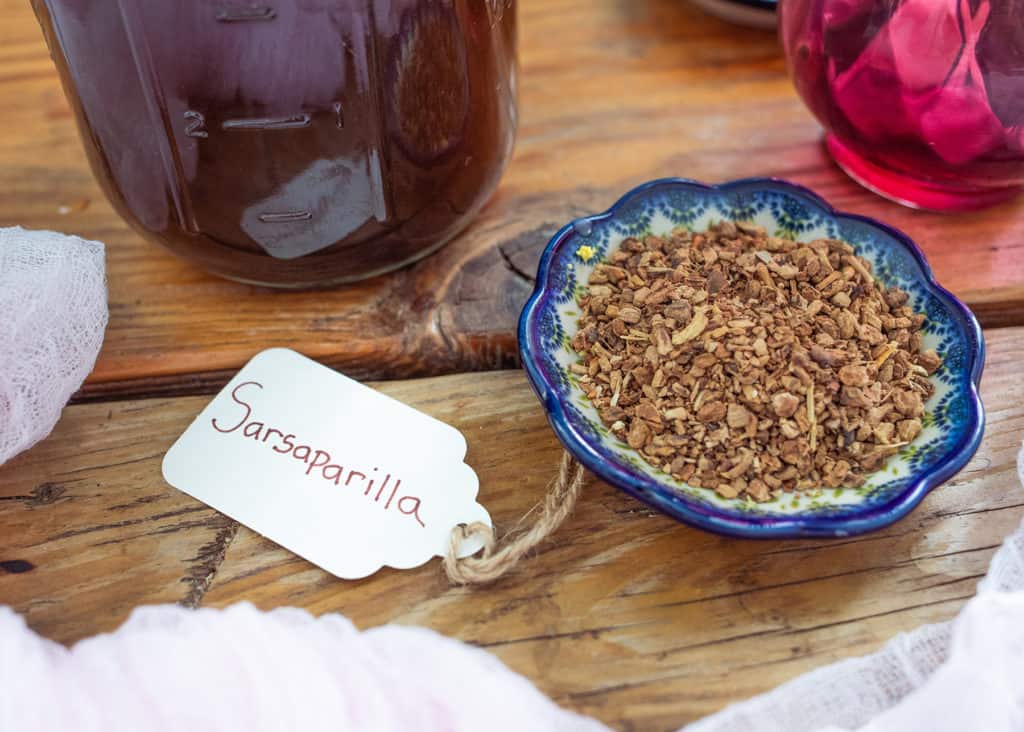
Birch Bark
Birch has a history of traditional use for inflammation, stomachache, urinary tract issues, and skin problems. Rich in antimicrobial compounds, birch bark has also been used to support the body in fighting off infection.
Sassafras Bark
Sassafras is an astringent herb that can help clear the liver and gallbladder. One of the transformational moments for mass-market root beers came in the 1960s, when the FDA banned sassafras essential oil as a food and flavoring, and later made it illegal to sell sassafras for human consumption. However, you don’t have anything to worry about. Safrole, the chemical constituent that is believed to damage the liver and potentially cause cancer, is not water soluble and will not be extracted in your brew.
How to Make Root Beer
One of the ingredients you need to kick start fermentation is a “ginger bug.”
Root Beer Recipe
Ingredients
- 10 cups water
- 1/4 cup sassafras (Sassafras albidum) bark
- 1/4 cup sarsaparilla (Smilax officinalis) root
- 2 tsp birch (Betula lenta) bark
- 2 tbsp fresh ginger (Zingiber officinale) root, grated
- 2 tbsp licorice (Glycyrrhiza glabra) root (can substitute 4 pods star anise)
- 2 tsp dandelion (Taraxacum officinale) root
- 1 cup maple syrup
- 1/2 cup ginger bug starter
Instructions
- Pour 8 cups of water in a pot and add the herbs (you’ll use the remaining water later).
- Bring to a boil.
- Once boiling, lower heat and cover the pot, simmering the herbs for 20 minutes.
- Remove from heat and let cool for 10 minutes.
- Strain your decoction, then transfer to a half-gallon mason jar.
- Stir in maple syrup and mix well.
- Allow the sweetened decoction to cool completely.
- Stir in your ginger bug liquid to start the fermentation process.
- Pour the remaining water into the jar until it’s an inch or so from the top.
- Cover the jar with cheesecloth and allow it to ferment for two days in warm temperatures and up to four days if the surrounding environment is cool.
- After this initial fermentation, you can create more effervescence by closing the root beer in swing-top glass bottles. If you do this, it’s important to check the pressure daily so the gasses don’t build up too much. Leave it too long and your root beer may spray out uncontrollably when you open it!
- When you’re happy with the level of carbonation, drink your root beer.
- Alternatively, you can store your bottles in the refrigerator to minimize continued fermentation. Continue to monitor the bottles for gas build up.
Bringing Soda Back to Its Roots
It’s hard to believe that the soda industry as we know it shares a common ancestor with North American herbalism, but this also reveals a huge opportunity. When we come back to whole foods and fermentation, we don’t have to choose between our health and an enticing effervescent drink. By tracing the recipe through time and learning how to make root beer at home, we can recreate the original health-giving beverage that our family and friends know and love – and spark a conversation about the roots of root beer.
Like this recipe and want more??
You don’t have to be an herbalist or an incredible cook to unlock the healing potential of your food and drinks. Discover how common kitchen herbs can help you harness the power of natural, preventative health care in my online course, My Herbal Kitchen.
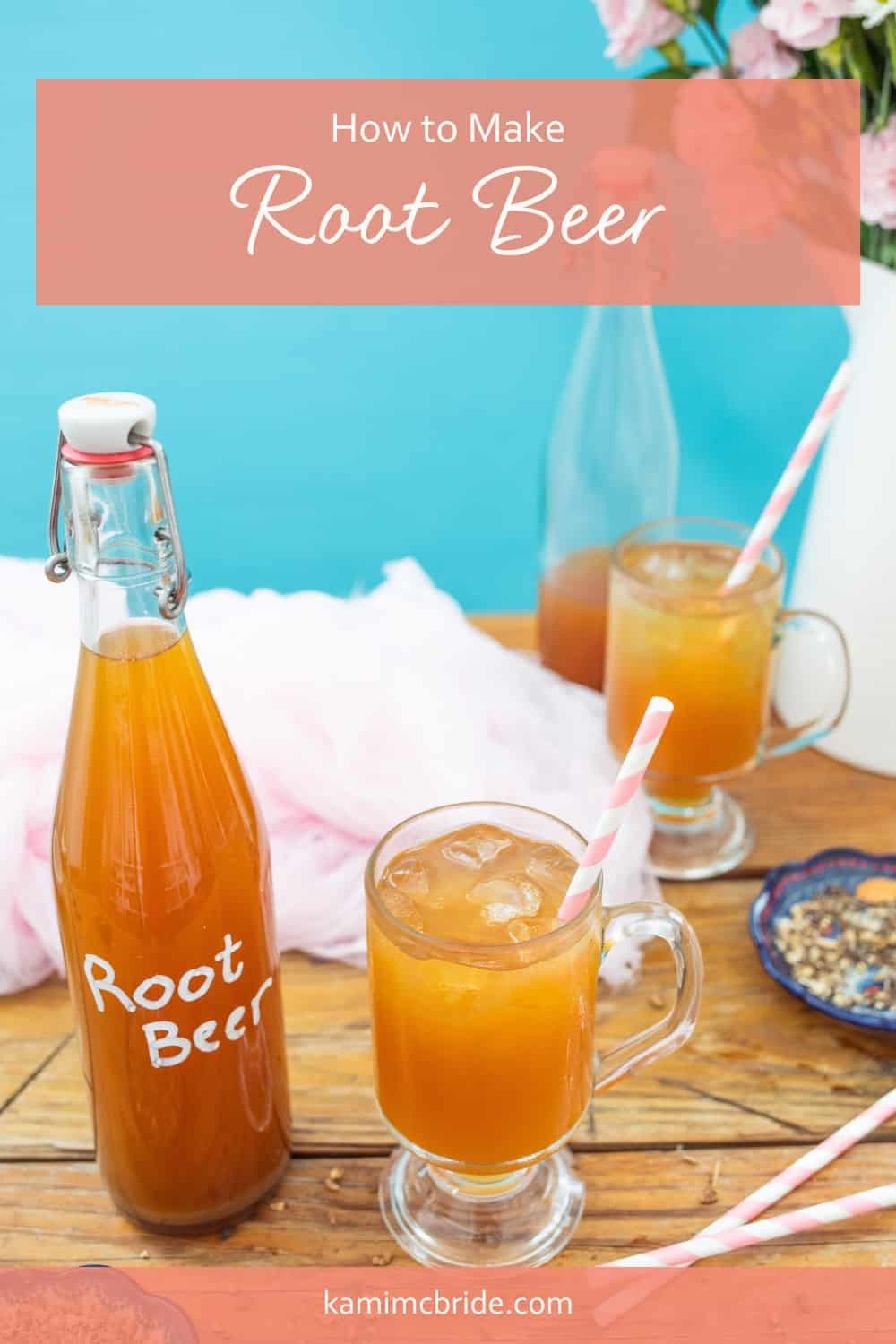

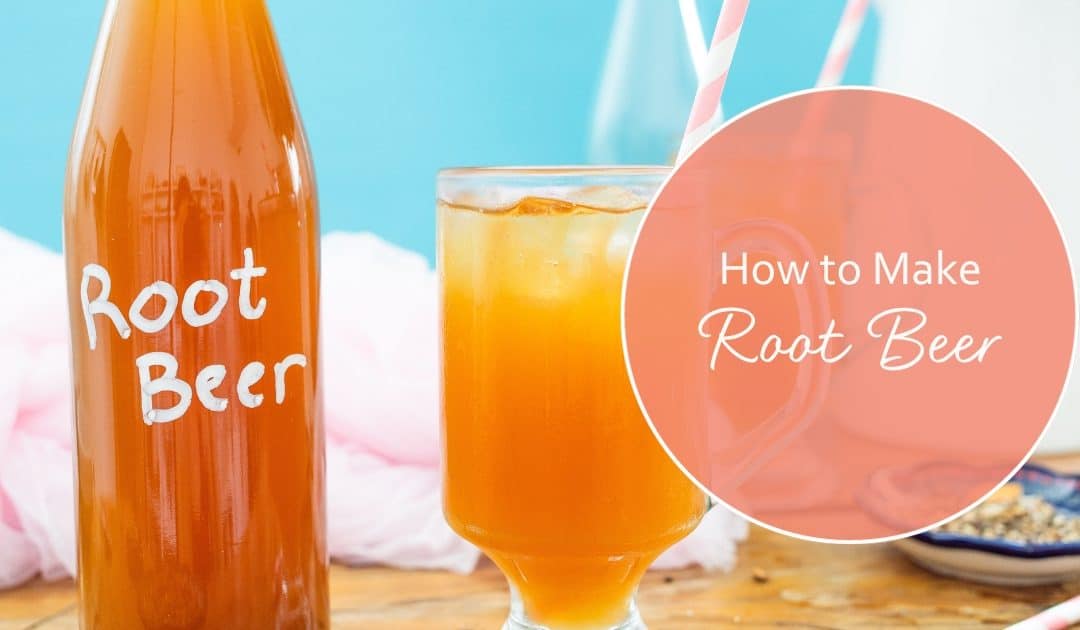
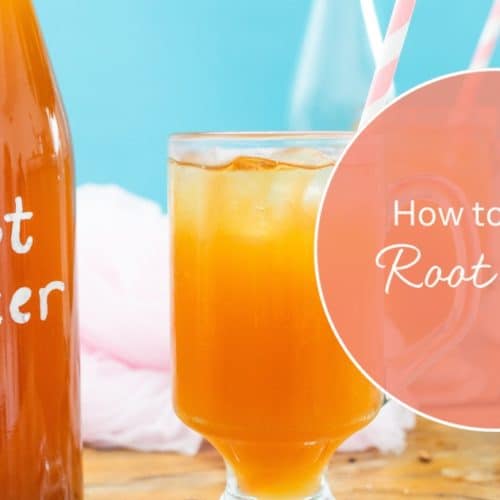



The recipe is in the blog. Search for ginger bug.
How do you “check for carbonation” daily – won’t the effervescence disappear if you open to check?
Opening the bottle will not release all of the carbonation from the Root Beer. We do this to release some of the carbonation so that it doesn’t build up too much inside of the bottle.